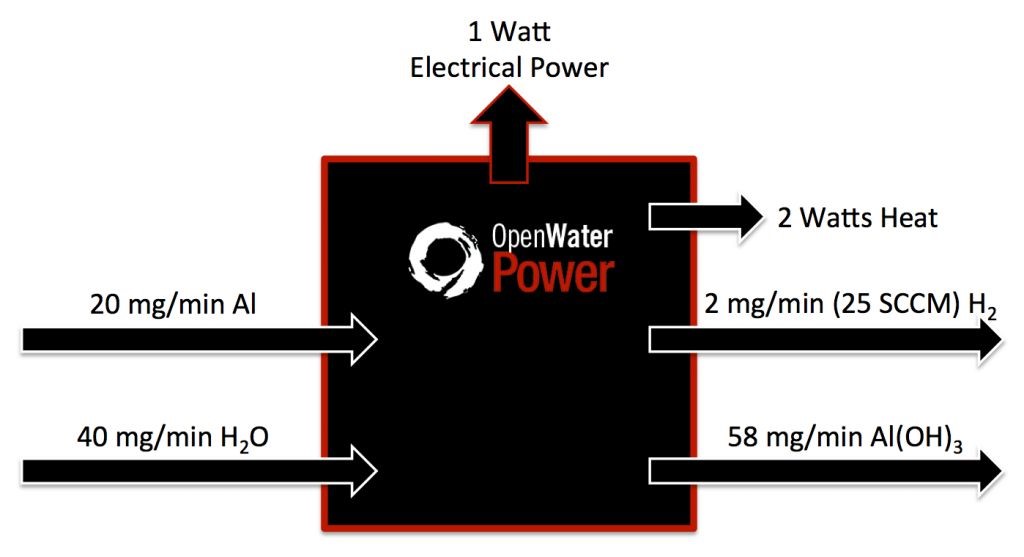By Gary Elinoff, contributing writer
A new type of aluminum water battery has been developed at MIT spin-off Open Water Power (OWP) specifically for use with underwater systems, such as unpiloted underwater vehicles (UUVs). Although the present development isn’t rechargeable, it is far safer than lithium-ion batteries (LIBs) and achieves a far greater energy density. It is expected that this increased storage capacity will increase UUV range by a factor of 10 over what is currently achievable with troublesome LIBs.

Fig. 1. Source: Open Water Power.
How it works
The battery is composed of an anode and cathode based primarily on aluminum (Al) and nickel (Ni), respectively. When the battery is ready to operate, it lets in water, accepting either seawater or fresh water; either will serve as the primary source of a slightly alkaline electrolyte.
The electrochemistry of the unit is mapped out in Fig. 2 . At the cathode, a chemical reaction splits water into hydroxide (OH– ) ions and hydrogen (H2 ) gas. The hydroxide ions migrate thru the electrolyte to the anode, where they react with the Al atoms to yield aluminum tetrahydroxide ion Al(OH)4 – and three electrons. The three electrons return to the cathode via the electrical load, supplying it with power.
It should be noted that if this were a land-based system, the H2 gas would be used to feed a fuel cell to generate still more electricity. However, underwater, there is no appropriate source of oxygen gas (O2 ), which a fuel cell requires along with H2 to generate electricity and water (H2 O). So unfortunately, this environmentally harmless but energy-rich gas must simply be vented into the sea.

Fig. 2: Anatomy of the aluminum water battery. Source: Open Water Power.
How it’s different
Aluminum-based power systems have a long history of development, both at MIT and at other sites. The first manifestation was simply a heat generator, with electricity created through heat by the use of thermoelectric generators and other means. The next was to generate H2 gas, which was better, but suffered from the need for an O2 source, as described earlier. The inputs and outputs to OWP’s aluminum water battery are summarized in Fig. 3 for a system generating one watt of electrical power. Note that two watts of waste heat are generated for one watt of useful electrical power, for an efficiency of ~33%.

Fig. 3: Inputs and outputs of the aluminum water battery. Source: Open Water Power.
According to a report in MIT News , OWB is working with the U.S. Navy on replacing the batteries currently in use with the seaborne acoustic sensors used to ferret out enemy submarines. It will also soon begin a project with Riptide Autonomous Solutions, which makes UUVs designed for underwater surveys. It is hoped that the new batteries will be instrumental in increasing vehicle range from 100 nautical miles to 1,000 nautical miles.
Source: Open Water Power
Advertisement
Learn more about Electronic Products Magazine





